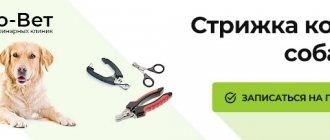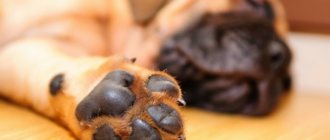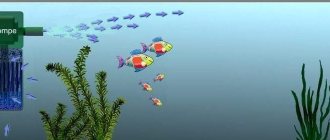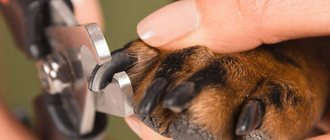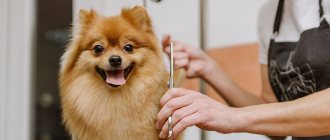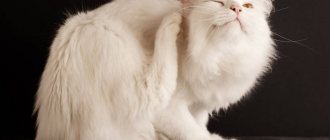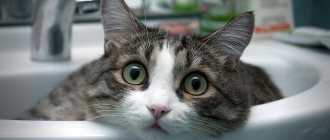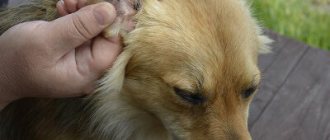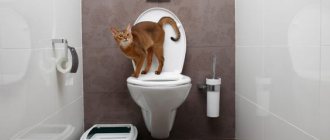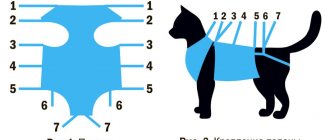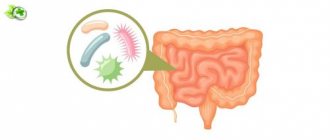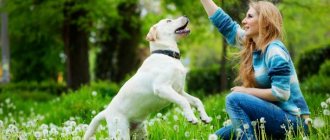Why trim your nails?
We are used to thinking that nail trimming is a privilege exclusively for cat breeds. The procedure allows you to protect children, coatings, furniture and interiors from scratches. Nail trimming for dogs is considered an innovation. After all, the effectiveness of such a procedure has recently been scientifically proven.
Not all dogs manage to grind their claws down on the ground when walking.
There are several reasons for constantly getting a haircut:
- Long claws prevent the dog from putting his paw together and, therefore, putting pressure on his toes. This will lead to lameness in the future. Look at street dogs - you may notice how difficult it is for some of them to move around. This is a consequence of the lack of proper care and haircut;
If left untreated, dogs may experience pain when standing on their paws with raw nails. - Long claws can cause various infections to develop and grow into the skin. Most often, this phenomenon is characteristic of the lateral phalanges, because these claws are not used when walking, which means they do not rub against the floor. When ingrown, it causes very severe pain and contributes to the development of inflammation and infection.
This procedure has not only a lot of supporters, but also opponents. Owners who are against trimming claws claim that during the procedure the animal experiences stress, feels unwell, and an incorrectly performed procedure can even become the basis for the development of diseases from infection.
Some owners prefer to leave their dog's claws in their original form.
Unfortunately, in most cases, these same opponents of grooming are faced with problems that appear in their dogs. Let's look at the consequences of ignoring growing nails that can affect your dog:
- When walking, long limbs begin to rest against the surface, which is why the paw begins to diverge and freeze in its natural position. At the same time, every step is difficult for the dog and is accompanied by unpleasant sensations. As a result, the center of gravity shifts, the vessels become deformed;
Long claws will certainly interfere with the pet’s comfortable movement - Imperfection of balance. Short claws allow the animal to feel support, which is very valuable when moving. Long claws contribute to eversion of the fingers, as a result of which the animal often falls and rolls over on its side;
- Serious injuries. Dog nails continually grow into a long, curved shape. Sometimes situations occur when, when walking, such claws cling to bushes or fabric, which can lead to tears;
Overgrown claws tend to break, leaving open wounds on your dog's paws. - Disturbing the owner's peace of mind. Overgrown claws click loudly when walking. At night, if your pet wants to take a walk to eat or drink water, his steps will not go unnoticed.
Do all dogs need to have their nails trimmed?
Yes, almost all dogs need to have their nails trimmed. Small breeds (Yorkshire terrier, Chihuahua, Spitz, French bulldog, pug, Papillon, etc.) spend most of their lives in the arms of their owners or on sofa cushions. Therefore, trimming their nails should become a mandatory and regular procedure. This rule also applies to dogs of medium breeds (poodle, basset hound, boxer, etc.). The only exception would be very active dogs that spend several hours every day outside, running on hard asphalt surfaces and thus wearing down their claws.
Features of caring for a puppy
The pug is a breed that can only be kept in an apartment or other residential premises. Such dogs are absolutely not suitable for life on the street.
Before you bring your pug puppy home, you need to prepare a place for him. The issue of choosing the location of the future pet should be approached responsibly - the bed should not be placed near a radiator or in a place with constant drafts.
Due to the specific structure of their muzzle and head, pugs often snore heavily. To ensure a restful sleep, the owners move the place to a secluded corner, pantry, balcony and other isolated rooms. This is absolutely forbidden to do! Pugs are very people-oriented; due to forced isolation, they can become depressed and get sick.
A dog bed should be chosen from a dense, easily washable material - it is better if it is natural. The filler must be hypoallergenic.
A full range of basic measures for caring for a pug of any age includes not only hygiene, but also proper walking and preparation of a competent diet for the pet or the choice of high-quality food. As a rule, all pugs are very clean, so they do not require close attention in terms of water procedures.
Grooming
When caring for a pug, it is very important to take into account all breed characteristics. The neat appearance of a pet directly depends on many factors. It is imperative to pay special attention to the condition of the animal’s coat. It is best to clean and comb the coat with an iron comb or a special comb, approximately once a week.
Washing the pug is not done too often, only when necessary, when it is heavily soiled. The skin of a pet is covered with a special film, and frequent water procedures help remove such protection, which can negatively affect the development and health of the animal.
Cleaning ears and eyes
While keeping a pug, you need to carefully monitor the condition of your pet's ears and eyes. The first signs of the disease are watery eyes, as well as the formation of weeping dark spots around the eyes. In this case, the pet should definitely be shown to a veterinarian, who will help prescribe the most effective treatment regimen.
A pug's ears need to be examined regularly to rule out inflammation. The pug's ears are also systematically cleaned with a cotton swab or cotton wool slightly moistened in a special hygiene lotion. If there is strong discharge that has a brown tint or a distinct unpleasant odor, you should consult a veterinarian.
Tooth and claw
Healthy teeth are very important for a dog, which is one of the carnivorous animals, so constant monitoring of the general condition of the oral cavity is required. A breed characteristic of the pug is a tendency to accumulate food debris in the skin folds around the mouth, so after each feeding it is recommended to carefully wipe this area with a damp cloth.
Veterinary toothpastes and brushes, as well as special treats or various preventive products sold by pharmacies and pet stores can be used to clean teeth. The pet's claws are carefully trimmed only as they grow, using special disinfected scissors.
A complete and balanced diet is the basis for a healthy diet for a pet. The daily diet, as well as the amount of food given, varies depending on the age characteristics of the pet and its level of development.
Puppy diet
From the age of one month, it is recommended to transfer the pug puppy to four meals a day, which should be nutritious and rich in calcium. At the age of up to three months, the puppy’s diet is supplemented with low-fat kefir or yogurt with a small amount of linden honey. The menu should also be diversified with fruits, buckwheat and rice porridge, quail or chicken egg yolk and high-quality chopped meat.
At the stage of active growth and development of a pet, the first two feedings involve the use of kefir, yogurt or cottage cheese with honey, as well as stewed vegetables and raw fruits. For the third and fourth feedings, lean poultry, lean beef or rabbit are given, which are chopped and added to porridge. Starting from the seventh month, you need to gradually transfer the puppy to three meals a day.
We suggest you read: What are the sizes of a Chow Chow?
Dog handlers advise taking a puppy under one year of age into your home so that it gets used to it and adapts its behavior to the requirements of its owners. At home, the pug quickly becomes a real companion for children and adults. A teenage child can become a full-fledged owner of a dog and take care of it. The friendliness of the little “snub nose” extends not only to people, but also to other animals.
It is advisable to equip the pupil with a separate sleeping place. It must be removed from heating appliances and isolated from drafts. A foam mattress with a removable cover is suitable as a bed. True, many dogs ignore their corner and prefer their owners’ bed. Some owners lock their pet in another room at night due to severe snoring, but such an attitude can negatively affect the animal’s mental state.
The pug is unpretentious in nutrition. However, he always tries to beg for a tidbit. It is very important to prevent overeating, since representatives of the breed are prone to obesity and quickly gain excess weight. Excess weight entails a host of other diseases. Therefore, the diet should be properly balanced and moderate. You need to feed the dog 3-4 times a day in small portions.
The daily menu includes premium dry food, as well as low-fat meat. You should not give your pug liquid food due to the structure of the nasopharynx. At the same time, the animal must have access to clean drinking water or milk (it helps against heartburn). After each feeding, you should carefully wipe the paranasal area with a damp cloth (the author of the following video is Iryna Valencia).
The pug has a hard time with loneliness. He should not be left alone at home for a long time. To minimize stressful situations, it is advisable to purchase a partner for him. These dogs get along well with each other. However, when keeping different-sex animals at the same time, the girl will have to look after the pug during estrus, if mating is not planned.
Little “snub noses” are capable of learning, smart, but incredibly stubborn. Therefore, the owner needs to be patient in order to learn basic commands with the pug. Under no circumstances should you yell at a dog for disobedience when raising a dog. Raising a pug is necessary with the help of affection and kindness.
Do you find keeping pugs difficult?
How to care?
Proper care of your pet is the key to its health and longevity. Reviews from owners indicate that this is not difficult to do, just follow the recommendations.
Teeth and oral cavity
The breed has a predisposition to dental diseases. If your pug's mouth stinks, it means tartar has formed. It is removed by a veterinary dentist. The procedure is performed under general anesthesia. A more acceptable way is to use special dental sticks. Chewing them allows you to painlessly remove plaque from your teeth and prevent the formation of stones.
Experienced dog breeders recommend regularly brushing your pet's teeth with a brush and toothpaste for dogs. If necessary, it is replaced with a soda solution. This helps keep your mouth in order.
Eyes
Caring for your pug's eyes requires special attention. Dirt and secretions constantly collect in their corners and must be carefully removed. The procedure is best done in the morning. Contamination is removed with a cotton pad soaked in warm water.
If the cornea becomes red or purulent discharge appears, you should consult a specialist for help. Ophthalmic diseases are treated by placing chloramphenicol or tetracycline ointment behind the eyelid.
Ears
Ear hygiene involves cleaning it from wax once a month. A more long-term measure is ear correction. The pug breed standard defines two ear shapes: “button” and “rose”. If the ear has a crease that does not correspond to the standard, it is corrected.
- To do this, the ears are glued in the correct position for 2 weeks.
- Then take a short break of 1-2 days and repeat again.
- You need to glue the ears until their shape returns to normal.
- Usually the correction lasts 1-1.5 years.
Ears begin to be sealed from puppyhood of 3-4 months. The operation has not only cosmetic and aesthetic significance, but is also carried out for the purpose of prevention. Closed ears prevent more dirt and dust from getting inside (video from Anna channel).
Claws
Pug claws do not wear down when walking, like other canines. Because of this physiological feature, overgrown claws are trimmed twice a month. If they are not trimmed on time, the fingers become deformed and it becomes difficult for the pet to walk. A special nail clipper is used for the operation.
Wool
The pug belongs to the group of short-haired dog breeds. Despite the short length of the coat, the animal is subject to heavy shedding. The wool must be combed with a rubber brush or a special comb, in the direction of hair growth. Treatment is carried out once every 7 days.
Many owners prefer to solve the problem of hair loss with the help of grooming or trimming (artificial shedding). Grooming a pug with a clipper with a special attachment leaves hair at 3 mm. The entire body and paws are shorn.
Beige and fawn colored individuals shed especially heavily. Haircut can reduce hair loss.
Bathing
You need to bathe your pug once every 2-3 months. The rest of the time, the paws and belly are wiped with a damp cloth after a walk. I use a special shampoo for washing. It is especially necessary for the care of black wool, since it can fade and lose its rich color. You should periodically use flea shampoo to help get rid of harmful insects. Upon completion of the water procedures, the baby is thoroughly dried and wrapped in a towel until completely dry.
Treatment of skin folds
Hygienic treatment of skin folds on the face should be carried out at least once a week. Gently wipe the fold with hydrogen peroxide, and then sprinkle with talcum powder for children. Wrinkled skin traps sweat, dust and dirt. They cause irritation and spread an unpleasant odor (author of the video channel From the City).
If cleaning is not carried out in a timely manner, the student will develop dermatological problems.
What to buy for a dog
Before a small pug arrives in a new home, the owner must purchase:
- bed;
- cell;
- carrying;
- feeding utensils;
- diapers or toilet;
- toys;
- shampoo;
- comb;
- collar and leash;
- clothes.
Here is a very detailed video on what it takes to bring a pug home.
The selection at veterinary stores can be confusing, but making a list ahead of time will help you stay organized and get everything you need. This way you will stock up only on the goods you need and will not waste money.
For a good dog pedicure, you don’t have to buy half the pet store.
Table 1. Tools needed to trim a dog's nails
| Item | Description |
| Claw cutter | These scissors look like pruning shears. They have 2 handles and 2 blades. They are suitable for small breeds, but they are not always suitable for large dogs with hard claws. |
| Guillotine | A tool that has slots to accommodate the claw. Thanks to the levers, a process is launched during which the claw is cut off. This device is suitable for dogs of any breed. The main thing is to choose the size of the hole |
| File | In addition to the cutting device, you will need nail files. A carelessly cut claw can peel or even break. Files will allow you to round it and smooth out unevenness. |
Files can be either manual or electric. They come with several attachments that vary in level of hardness. By inserting the nozzle into the device and turning it on, you will see how the head begins to rotate very quickly. With this tool you can polish the claw, giving it the desired shape.
Preparing the dog for the procedure
In order for the animal to calmly endure the process of trimming its claws, it must be prepared in advance. The advantage of small dogs is that they are much easier to hold than large dogs. But if your pet is nervous and fussy, trimming its nails without injury is very difficult. Therefore, first of all, the dog must be in good spirits. If the owner is in a bad mood, then the animal will also be nervous.
It is better to carry out the procedure after the dog has eaten or after bathing. Then she is in a more relaxed state. So that the pet does not feel fear during the procedure, you need to make it in the form of a game. You need to gently pick up the dog's paw, stroke it, and run it with a nail clipper without cutting the claws. Gradually the animal will get used to the tool and will not be afraid.
Important! If the dog is afraid and the paw is pulled out, then the procedure should be stopped and the claws should not be cut by force. Otherwise, the pet will constantly avoid this procedure in the future.
Structure of a dog's claw
Before you begin the procedure, you need to become familiar with the anatomy of the structure of the animal’s claws and paws. Wait for the moment when the animal is calmly lying next to you. Take his paw in your hands and look at it carefully.
To improve your nail trimming routine, find out what shape your dog's nails are.
Animals have three types of claws. You need to find out which subspecies your dog belongs to:
- Folded. The claws are quite hard and arched.
- Hare. Straight claws. They are much longer than folded ones and can be sharp.
- Feline. Bent arched claws with a curved tip.
Each type of claw requires its own individual approach to cutting.
You should not regard claws from the same point of view as human nails. It should be remembered that the claw is a full-fledged part of the paw that performs certain functions assigned to it. A dog uses its claws to maintain balance, grip the surface when walking or running, dig the ground, and protect itself.
Pain can be avoided if, when cutting, you do not touch the blood vessels inside the claw
Painful sensations in an animal begin when the cutting tool cuts off not the claw itself, but its internal contents. The so-called claw bed. Your task is to cut and sharpen the keratin cover, the top coating, which has not had time to wear off on the surface.
Need for nail trimming
Manicure for dogs is not only an aesthetic procedure. When the claws grow, the animals' gait becomes deformed. They cannot place their paws straight. Puppies may develop deformed paws. Over time, the joints become bent and problems with the musculoskeletal system begin.
If you have long claws, there is a risk of them breaking off and causing an infected wound. When trying to scratch, a dog can also injure itself with its claws and get an infection. Clinging to furniture, carpets and other objects with its long claws, the animal simply spoils them.
Video about walking with a pug
It is advisable to walk your pug three times a day, playing active games with him. If necessary, your dog can be trained to go to the toilet in a litter box at home.
Short-haired dogs need additional heating - you will need more than one set of clothes.
After a walk, the dog must be examined, paying attention to the eyes and ears. Check for parasites and mechanical damage. Washing paws is a mandatory procedure that is taught from a very young age.
After every walk, especially in the warm season, a pug dog must be examined for ticks. They can stick to the stomach or paws, because the dog is low. It would also be a good idea to accustom your pug to washing its paws after a walk, because they love to lie on the sofa. To do this, you should purchase a special paw brush, and to clean the fur, a special comb or mitten. These measures will help keep your pet clean and healthy.
Particular attention should be paid to the folds on the pug's face; this is a very important point. Mites can crawl into them, dust and dirt can become clogged, which will lead to serious problems. It is very difficult to detect ticks in such folds. If your dog begins to scratch its face or its behavior has changed dramatically, you should contact a veterinarian.
Nail trimming process
A good specialist can do a haircut quickly and efficiently. To give a small dog a proper manicure at home, you need to follow certain rules.
Watch a review of premium dry dog food, and also learn about the nutritional rules for small breed dogs.
The most effective folk and medicinal remedies for ear mites in dogs are collected in this article.
On the page, read the description of the Miniature Poodle breed and get acquainted with information about the character and behavior of the dog.
Algorithm of actions:
- Wash the animal's paws, cut off the hair between the pads.
- Take the paw with your hand just above the ankle, fix the claw and carefully cut off the sharp end with a nail clipper at an angle of 45 degrees.
- Do the same with each claw.
- After cutting all the claws, they should be sharpened with a nail file and given an oval shape.
- At the end of the procedure, the dog must be praised and treated with his favorite treat.
Before cutting the claw, you need to determine where the blood vessel (hyponychium) is located. If it is damaged, the animal will feel severe pain and bleeding will begin.
Dog vaccination
Vaccination or vaccination is an event that is aimed at preventing the development of infectious diseases that are dangerous to the life and health of a pug. It is very important to remember that you should absolutely not walk your pug puppy until the basic preventative vaccinations have been completed. About a week before the first vaccination, it is necessary to perform a complete deworming.
The first vaccination is given to the puppy at approximately two months, and the second vaccination is given three weeks later, but before the teeth change. It is best to use complex and well-proven polyvalent serums for this purpose.
The veterinary clinic must issue a veterinary passport, which must indicate not only the date of vaccination, but also the name of the drug used. Walking is allowed approximately one and a half weeks after the second vaccination.
A newborn pug is protected by the mother’s immunity, but further protection of its health is the owner’s responsibility.
We suggest you read: How to trim your cat’s claws yourself - effective tips
The result of vaccination is not only a healthy pet, but also the opportunity to obtain a veterinary passport. Vaccination is carried out in the clinic or independently, but they must make notes in the passport.
The breed often has allergies to veterinary medications, so it is better to get vaccinated in a clinic.
The first vaccination is given at the age of 2-2.5 months, repeated every two weeks. Further vaccination depends on the pace of development of the pug - after a complete change of teeth.
After vaccination, quarantine (2 weeks), abolition of bathing and monitoring of the animal’s condition are required.
Home conditions or veterinary clinic?
Having realized the need for a haircut, loving and responsible owners are faced with a choice: trim their nails at home, doing it on their own, or contact a veterinarian.
Contacting a veterinarian assumes that the procedure will be carried out quickly, as painlessly as possible for the animal, and most importantly, correctly. Your pet will receive minimal stress, and you will be confident that the animal’s health is in good hands.
A specialist will help you cope with the difficulties of trimming your nails and give you some advice.
However, this method has a number of disadvantages:
- Veterinarian services cost money. A dog's nails should be trimmed once a month to a month and a half. Calculate how much a pedicure for an animal will cost you and make a decision;
- The need to take your pet somewhere. For many dogs, travel is a real stress. If in the summer it is quite easy to lure the animal outside, put it in the car and take it to the veterinarian, then in the winter it is a real problem that will require washing its paws, choosing overalls, and so on.
Trimming nails in a veterinary clinic, like trimming them at home, has its own advantages and disadvantages.
Home haircuts also have positive and negative sides. The positive aspects are associated with the following conditions:
- Saving money. You can carry out this procedure at any time convenient for you, without waiting for an appointment;
- Availability of nail clippers. All instruments for the procedure are available and can be purchased;
- Availability of information about haircuts. There are a huge number of videos and articles on the Internet that will tell you how to correctly carry out the procedure.
One owner sometimes cannot cope with trimming the claws and holding the animal
The main disadvantage of getting a haircut at home is the inability to carry out the procedure completely alone. Most likely you will need an assistant. However, if we are talking about a decorative dog, then it is quite possible that you can handle it on your own.
Why is trimming your dog's nails important?
The part of the claw that we see is only a horny cover, under which there is a pulp (containing nerve endings and blood vessels) and the last phalanx of the finger. On the dog's thoracic limb there are 4 fingers and one rudiment, which has no function, but bears a claw. Normally, there should also be 4 toes on the hind paw. However, sometimes puppies are born with the so-called dewclaw or wolf toe.
If your pet's stratum corneum grows excessively, the load on the entire bone apparatus changes. The animal's gait is disturbed and lameness appears. Such deviations over time can lead to degenerative-dystrophic and inflammatory processes in the joints.
In addition, if the stratum corneum is too long, your pet is more likely to get injured while walking. The claw can catch on an uneven surface, or break off, damaging the pulp and even the phalanx. Sometimes the stratum corneum grows to such an extent that it curls into a “horn” or grows into the pad of the finger. Therefore, it is important to trim your dog’s nails on time and correctly. The procedure can be performed at home if you have experience and the necessary equipment.
Selecting a tool
If you see that your animal's nails need trimming, do not use regular scissors. You risk damaging the animal's claws and causing him pain. Dog claws are much stronger than those of humans and cats, so they require special tools. But ordinary scissors will either be broken or quickly become dull.
It is very easy to injure an animal when trimming its claws with ordinary scissors.
Veterinarians advise purchasing special nippers that are designed specifically for dogs; another name for them is nail clippers. Don't buy the cheapest model available. In order for a tool to serve you faithfully for a long time, it needs to be of high quality and also be selected taking into account the individual characteristics of the animal.
The following tips will help you choose a quality nail clipper:
- Pay attention to the material of the tool. It is best if it is made of steel or brass;
High-quality metal from which the blades should be made will help you change nail clippers much less often. - Pay attention to the structure of the structure. It must be cast and fastened with rivets at the joints;
- Pay attention to the coating of the blades. The metal must be treated with chrome. Otherwise, the device will quickly rust;
- Hold the unit in your hands. The handles should fit comfortably in the palm of your hand and, if possible, be rubberized, because the haircut procedure is quite long and the bare metal will soon begin to slide in your palm.
First of all, nail clippers should fit comfortably in your hands.
Finally, the device must match the size of your animal's claws. There are three categories of nail clippers, which are designed for miniature, medium and large breeds. Sold as universal products that are suitable for dogs of all sizes, as well as cats. But buyers complain about such devices because they quickly become unusable. Therefore, it is best to select a nail clipper according to the size and dimensions of your pet.
How much does dog nail trimming cost?
The cost of a regular nail trimming procedure for dogs ranges from 50 to 200 rubles per paw. On the thoracic limb, wear occurs worse, so the stratum corneum grows faster than on the toes of the hind paw. Therefore, in the price list of a veterinary clinic, the tariff, as a rule, is indicated for one paw for those cases when trimming needs to be done only partially.
Also, the final price when trimming a dog’s nails can be affected by:
- Fixation of a pet by veterinary clinic staff.
- Treatment of damaged, broken claw.
- For physical injuries caused by a dog to a doctor or assistant, many institutions have introduced additional fees.
- General sedation or local anesthesia if necessary.
If you call a specialist to your home, then a travel fee will be added to the cost of the procedure. This cost can vary greatly in each city.
Nail trimming is a necessary procedure that is performed on pets of all breeds. If the stratum corneum does not wear off naturally, manipulation is carried out using special instruments. You need to get used to pruning as early as possible so that the animal can calmly withstand all the actions. It is important not to cause pain, otherwise the dog will remember the unpleasant sensations and further implementation of the procedure will be extremely difficult.
Breeding and participation in exhibitions
If the purpose of purchasing a pug is to obtain economic benefits, the pedigree and purity of the breed line are especially carefully checked.
Maximum attention is paid to the health of the animal before the first mating. A male pug should also undergo an examination to exclude the occurrence of pathologies in newborn puppies and complications in the parent.
For breeding, it is better to buy a girl, since not every male is suitable for mating. At the same time, the pedigree of the puppies will depend on the title of the father; the breeding schedule for such males is scheduled months in advance.
Dogs begin to be prepared for exhibitions at 1 month of age, and placed in a show rack at 2 months of age. By 9 months, the dog should stand for the prescribed amount of time and be able to show its teeth and bite. Patience and regular training are the key to success.
Treatment of wounds
Make sure your dog does not develop open wounds as a result of your actions. If any of the claws begin to bleed, do not let the dog run away from you and lick the wounds into a dark corner. You need to treat and disinfect the injured area.
Hydrogen peroxide will prevent infections from entering the wound on the paw
Apply a hemostatic agent to the damaged area. During the procedure, do not let go of the animal's paws. Soak a cotton pad in hydrogen peroxide or chlorhexidine and apply to the damaged area. Sit in a fixed position with your dog for a few minutes.
Be sure to comfort the animal and let it know that there will be no more discomfort from the procedure. Make sure that during this time the animal does not come into contact with the street and does not lick its claws.
By licking wounds on the paws, a dog risks introducing dangerous bacteria into them.
How to trim a pug's nails
If you have a new four-legged friend, it's time to learn all the ins and outs of nail care. Most dogs don't take well to having their nails trimmed, and owners won't go to great lengths to groom them. You should train your dog to be obedient during circumcision when they are still young. This will greatly reduce their fear.
If you bought an older pug, he may have concerns about this matter. In this case, you will need to exercise caution. Don't try to cut them by force. Let him examine the tools, smell them, and understand that they are safe and will not harm him. Try to calm your pet by speaking softly to him, pet him, and at the same time you should carefully trim the pug's paws.
After the dog has calmed down, trim one claw first and be sure to praise the pug for this and give him some tasty treat. After the first nail, let it run for a few minutes, then pick it up again and trim it. In this way you can deal with the other remaining claws. This process may take you a lot of time, but then the dog will get used to it and will sit quietly and wait for its portion of the treat.
Pug care: how to care for a pug at home
Selection of tools
An important condition is that before you start trimming claws, you need to prepare a special tool and follow basic hygiene rules:
- No need to skimp on wire cutters. Buy a dog nail clipper from a pet store. Most people prefer the guillotine type of nail clipper. They are the easiest to use. Nail clippers come in different sizes. Find out from the seller which nail clipper is suitable for your pug. When purchasing, make sure the blade is well sharpened. A dull blade is likely dull and can cause pain. A guillotine clipper is good for cutting off the tips of nails. If your pet doesn't need complete trimming, would this nail clipper be a good option? but provided that the claws are not very thick;
- Buy your dog a nail file separately to remove nicks, because scissors are not capable of cutting and leaving the nail straight;
- A first aid kit with peroxide and cotton swabs should always be on hand;
- It is better to teach a dog to trim its nails from childhood, that is, from puppyhood;
- Everything must be done so carefully and painlessly that the dog has no fear;
Before you start trimming your nails, you will need to get yourself a styptic. To do this, you can take ordinary flour, this is a homemade substitute for store-bought products. If you accidentally hit a nerve, you need to add flour to clog the wound;
Adviсe
Experienced owners on websites and forums share their observations on how to most effectively carry out such a procedure. Perhaps you will successfully apply some of these tips in the future:
- You should not cut off a claw if you could not get a good look at it. If the fur blocks your view, it is better to cut it;
In addition to veterinarians, groomers can also teach dogs how to trim their nails. - If the animal does not sit quietly in place, then you will need the help of another person. It is necessary that he sits behind the dog and gently grabs its neck with his hand. In this case, the animal’s head must be fixed. With your other hand you need to grab the animal by the paw. This technique is more of a last resort, in case the dog is very worried;
- It is important to accustom your dog to trimming its nails at a young age, because puppies adapt to new procedures much more easily;
The sooner your puppy gets used to nail trimming, the easier it will be for him in the future. - Do not raise your tone during the procedure. The dog should feel safe;
- If you are in a veterinary clinic and the animal was given a sedative before any procedure, ask the specialist to trim the pet’s nails at the same time. Many doctors agree to this even without additional payment.
The structure of the claws
Before you trim your pug's nails, you should learn about the structure of the nail. There is a “pulp” inside it, it is very sensitive. If you accidentally touch it, it will be very painful for the dog and most likely you will not be able to complete the haircut. Due to the danger of damaging the pulp, many owners refuse to trim their nails themselves and seek help from more experienced dog breeders or a veterinary clinic. It’s easy to understand for yourself that the pulp is affected, the claw will bleed heavily, but it’s better not to get to that point.
Dewclaws
The dewclaws are those toes that are found first on the forelimbs. Inexperienced dog breeders often wonder: is it worth trimming them and how to trim a pug’s front toe nails? The answer is yes - definitely! Such claws cannot be ground down on their own, they do not reach the ground, and if you do not monitor the growth of claws on such fingers, the dog can cling to it and get injured. And besides this, the claw can break out and cause severe pain to the baby. And if another decorative dog, for example a Yorkshire terrier, does not need to trim such nails, then a pug does. They love to scratch their faces with their front paws, and may accidentally scratch their eyes with their claws or even gouge them out. By the way, Chihuahuas also need to have their nails trimmed. So, it is better to trim such claws if you do not want to harm your pet.
How often to trim a pug's nails
If you already know how to trim a pug's nails, then you should find out how often to do it. It all depends on how often you walk your dog. If you walk every day in the morning and evening, then you don’t have to worry about trimming your nails; they will grind down on the asphalt themselves. A routine inspection should be carried out about once a year. But passive owners, those who spend little time outside, and these are mostly older people, must take care of their pet’s claws themselves. Also, if you live outside the city, where there is no asphalt or other hard surface, nail trimming is also necessary. If you don't properly care for your dog's nails, you may encounter the following problems:
- the dog may accidentally harm you or touch small children;
- may scratch its ears or eyes, then you will also have to treat the pug;
- your furniture will be damaged;
- If the house has laminate flooring, the pet will slide on its long claws;
Due to long nails, the dog's gait may be impaired;
